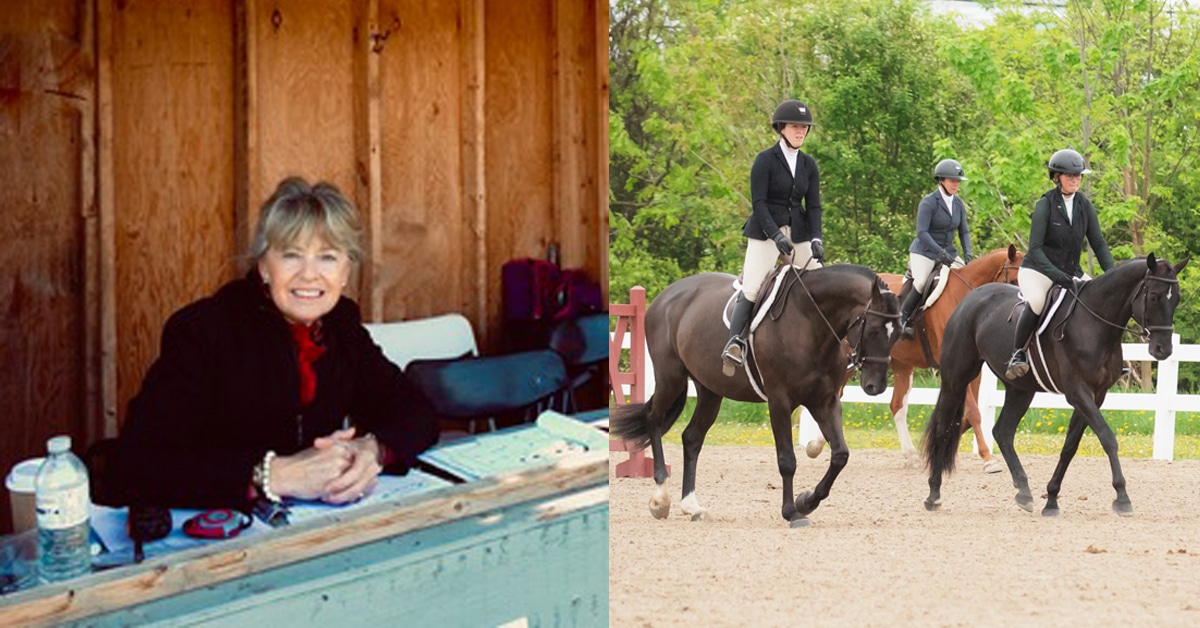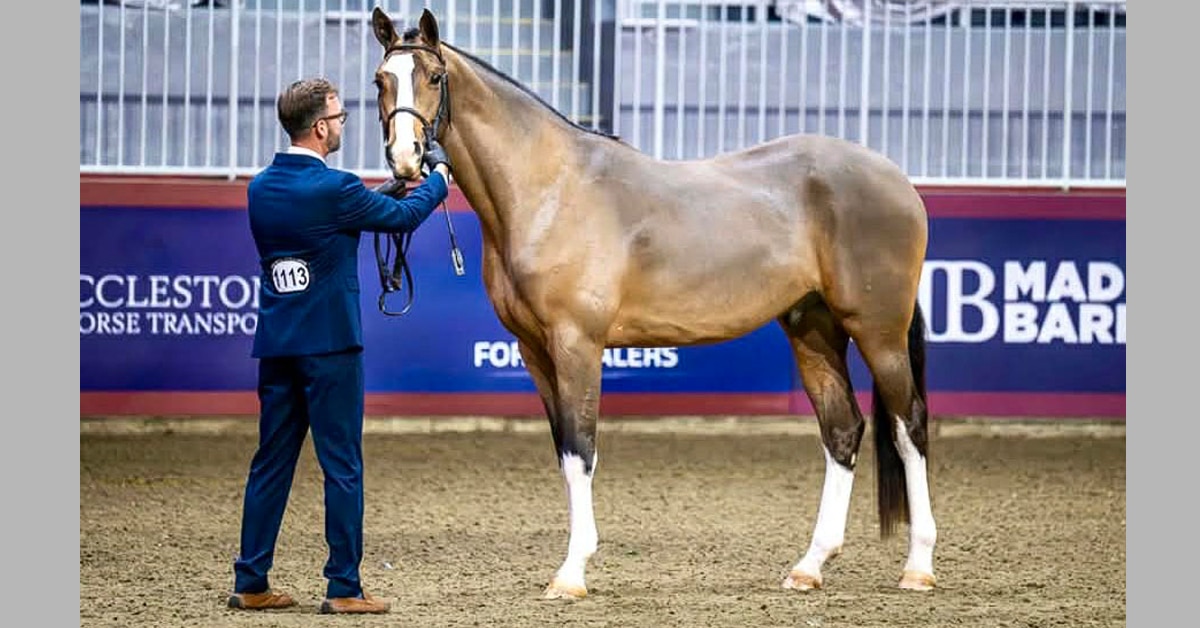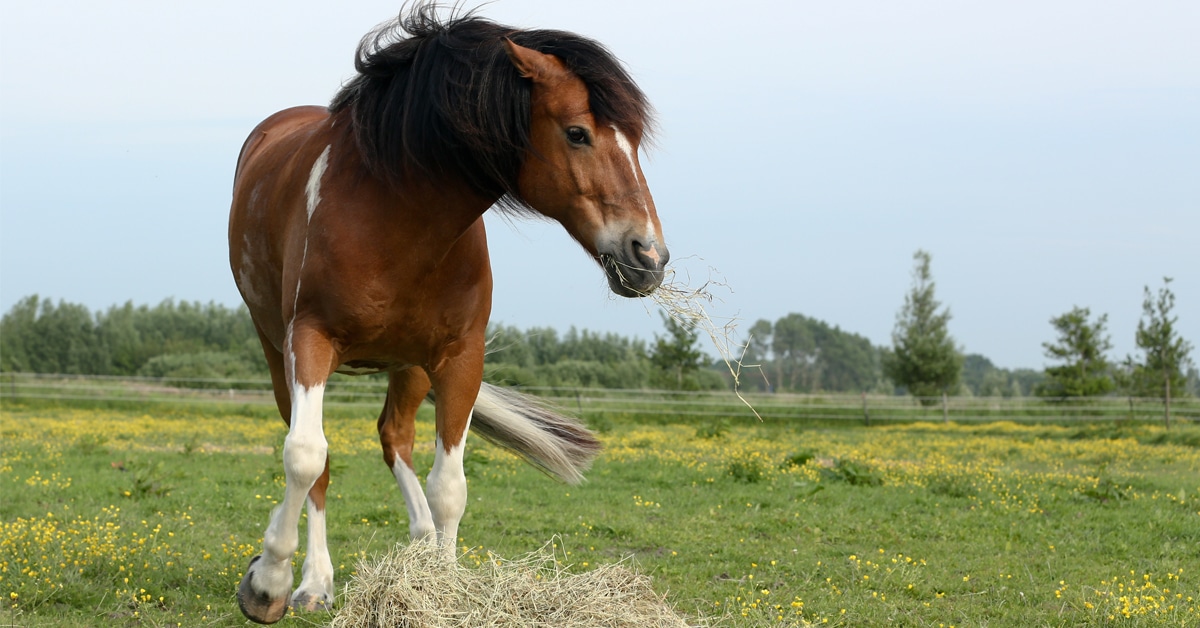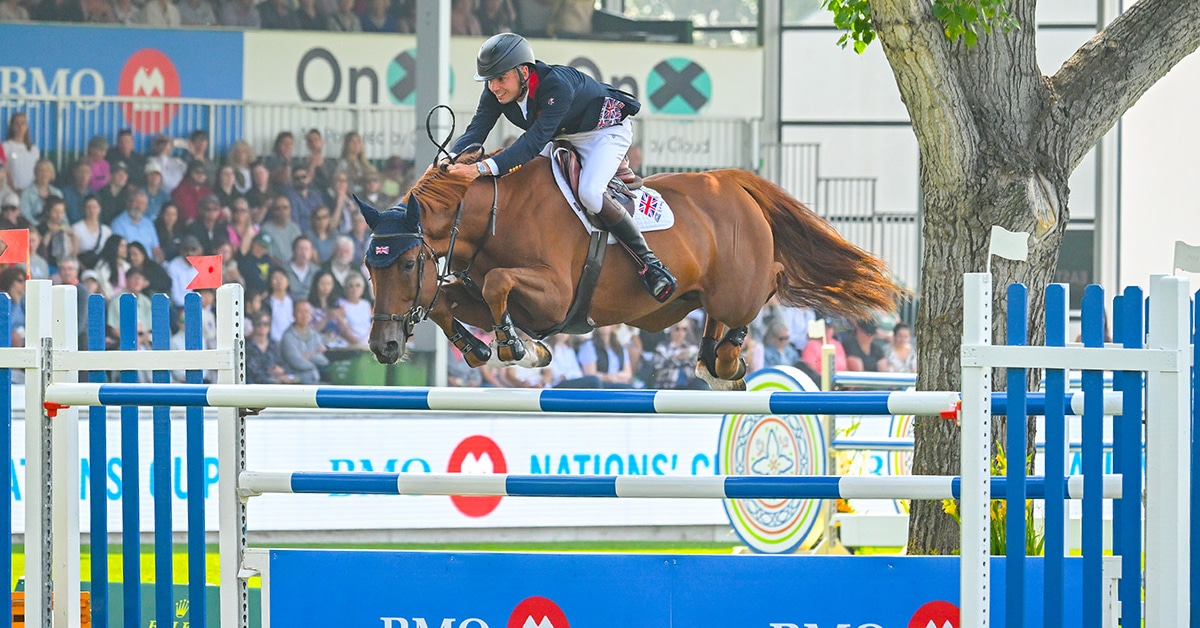As anyone who has witnessed a modern horse breeding operation can attest, current breeding practices are a far cry from what a stallion encountered on the range, hanging out with his harem. Today, stallions live a life of social isolation, rarely having the opportunity to touch another horse outside of breeding – and often not even then. In-hand breeding involves hobbled or twitched mares, or teaser mares, dummies, and artificial vaginas. And yet, despite invasive human intervention in what was once a seamless activity in nature, stallions for the most part tolerate these procedures with equanimity. When they do not, we are quick to label them as distractible, stubborn, oversexed, and dangerous.
Here I discuss how we can improve reproductive efficiency and fertility, create safer, more compassionate, and more successful in-hand breeding, as well as develop a more focused performance stallion. I explore how some of the breeding practices we see in a natural free-range setting might be incorporated into today’s breeding shed, and outline some basic learning principles that can ensure your boy keeps his mind on his job whether breeding, performing, or just being a nice guy.
“Not tonight, dear:” Stallions with low libido
Dr. Sue McDonnell, an equine practitioner specializing in reproductive behaviour at the Haveymere Equine Behaviour Clinic at New Bolton Centre, comments that many stallions brought in for sexual dysfunction are simply suffering from a lack of mare contact. In natural situations, stallions have year-round contact with mares, but in modern breeding operations, almost none (McDonnell, 2010). She notes that these stallions have become successful breeders when simply provided greater access to mares – housing the stallion next to a mare, or many mares, turning the stallion out with an adjacent fenceline to mares, extending the duration of hand teasing, or providing more than one stimulus mare in estrous from which to choose.
Stallions like girls who call the shots
Mares play a big role in the timing of copulation in a herd situation – an opportunity that is seldom afforded to hand-bred horses. In estrus, the mare generally approaches the stallion, rather than vice-versa. Head-to-head approach of mare and stallion followed by the mare swinging her hips toward the stallion’s head appears to be a key stimulus for initiating the stallion’s sexual interest (McDonnell, 2010). The mare’s particular stance is the signal to the stallion to mount, and the mare continues to play an active role during copulation, positioning herself to facilitate the breeding. In domestic situations, mares are generally restrained with a twitch or leg held up, a posture that does not resemble the stance that initiates mounting. Further, stallions are generally prohibited from head-to-head contact with mares.
Experienced stallions with a healthy libido generally respond to a restrained mare much as they would to a dummy, but inexperienced stallions or those with depressed libido may need more cues. McDonnell notes that while safety concerns are paramount, greater mare tolerance and higher stallion sexual arousal can be achieved by allowing the mare to approach the stallion, increasing the duration of hand teasing, and reducing the amount of physical restraint on the mare (McDonnell, 2000).
Status matters
A stallion undergoes physiological changes depending on whether he is a harem breeding stallion or a non-breeding “bachelor.” Harem stallions will typically have higher androgen levels, more pronounced sexual and aggressive behaviour, a larger penis and testes, and higher semen quality. Bachelor status imparts physiological changes in the opposite direction. The practice of housing stallions together, and away from mares, may impose “bachelor” status on some stallions that lowers libido, testosterone levels, testicular volume, and sperm production efficiency. Simply housing these stallions as the only stallion with a group of mares can turn this around (McDonnell, 2000).
“C’mon baby!”: Stallions with too much sexual drive
For stallions who are so eager that they become unruly or dangerous, McDonnell outlines a program of lowering sexual stimuli. This may involve removing the stallion for a “time out” as described below, or if using a dummy, removing the teasing mare altogether. MacDonnell stresses that the use of punishment (the addition of an unpleasant stimulus to eliminate an unwanted behaviour) is often dangerous, unlikely to be a long-term effective strategy, and has no place in stallion management.
Negative reinforcement (taking an annoying thing away)
Stallions can be managed with the use of negative reinforcement (applying a mildly aversive stimulus which is released immediately upon seeing the desired behaviour, or in the early learning stages, a baby step toward the desired behaviour). For example, pressure on a chain might be applied until the desired behaviour is exhibited (such as standing quietly) which is immediately released when the horse is still. This can be paired with a verbal command – “stand” – or hand signal. Eventually, the negative reinforcement (the chain pressure) can be phased out as the horse learns to stand with the verbal command or hand signal alone.
Positive reinforcement (adding something good)
Although negative reinforcement training is effective and forms the basis of most equine training, research has demonstrated that horses learn more quickly, retain the lessons longer, and show more positive behaviour towards their handlers with positive reinforcement training (Sankey, 2010). Since horses are evolutionarily designed and motivated to eat continually, food rewards work effectively as positive reinforcers. For stallions, however, we have at our disposal the world’s best-ever positive reinforcer, and this can be used with extraordinary effectiveness for training good manners in the breeding shed.
Stallions need to tolerate a complex pre-breeding procedure – to tease in a safe and controlled manner, stand for the washing of the penis, and to approach and mount the mare or dummy, all in a manner that ensures the safety of the mare, stallion, and handlers. McDonnell recommends that any undesirable behaviour should be followed by removing the stallion further away from the object of his desire (negative punishment). She begins by testing the stallion’s obedience to commands when at a distance from the mare or dummy. If the stallion becomes unruly at any point, the sexual stimuli are reduced. The stallion is taken back to the place where he last behaved well (out of the breeding shed or back to his stall if necessary). He remains there until he regains his composure, and the advance towards breeding can recommence.
MacDonnell compares this procedure to the “time-out” method used for over-stimulated children. Progress toward breeding is only permitted when the stallion tolerates the preceding step. In this way, a novice stallion may be trained, or an unruly stallion retrained, with minimal commotion or rough handling, learning that the ‘prize’ for tolerating these procedures is copulation.
Stallions with two jobs
Stallions are particularly adept at discriminating cues for breeding and most can readily learn to suppress sexual behaviour when not appropriate, while maintaining a healthy libido and normal sexual performance for breeding. In fact, some may actually do better – for both performance and breeding – when provided the opportunity to breed (McDonnell, 2004). Keeping breeding cues unique, such as a different location, different halter, possibly even a different handler (although it could be useful to have your stallion associate you with this very special event) will help the stallion make this discrimination and know when it is time to turn on the charm and when it is not.
In the shed: Often, handlers mistake normal sexual behaviour for misbehaviour and punish stallions for exhibiting a healthy libido and normal pre-copulation activity. Vocalizations, prancing, stomping, pawing, sniffing, approaching a mare or a dummy, and demonstrating eagerness to mount are all normal behaviours that should be encouraged and celebrated. Rushing up to a mare, wheeling, striking, kicking, rearing, and biting are not safe for in-hand breeding and can be selectively eliminated with consistent training. Above all, handlers must have the skill to prevent the stallion from forcibly gaining access to the mare or dummy and copulating, which inadvertently rewards the stallion for undesirable behaviour.
Under saddle: Performance stallions can be conditioned to suppress sexual behaviour while working in close proximity with mares, if mares are gradually introduced as one would any novel stimuli. While working under saddle, reward the behaviours you want (i.e. staying focused on the work and ignoring the girls) with an easing of training pressure, while gradually increasing the criteria: a mare walks by, the mare gradually moves closer, then several mares, introducing a mare in estrous, and eventually trying to simulate the horse show environment with many mares working and living in close proximity. The normal positive reinforcement staple – food – may be less successful with stallions, since food is a poor payoff compared to sex. Negative reinforcement – easing the pressure under saddle when the stallion exhibits the behaviour you want to see again – may be a more effective reinforcer.
Desensitizing the stallion to mares outside of the breeding environment can be accomplished before ever going to a horse show. Also, as discussed above and contrary to popular wisdom, stallions do better when they are housed with mares, for both breeding (as a stallion maintains his harem-stallion status) and performance (hanging out with mares becomes a part of everyday life).
Did I train him to do that?
In the end, most stallion behaviour problems occur as a result of misinformed or misguided human intervention. When stallions exhibit undesired behaviours, it is worth trying to source out how we may have inadvertently taught our horse this behaviour. Horses are always learning, whether or not we were intending to teach them anything!
To His Heart’s Content…
Masturbation, or more technically “spontaneous erection and penile movements (SEAM)” occurs normally about every 90 minutes in awake stallions (McDonnell, 2005). This behaviour is often misunderstood as aberrant and punished by stallion managers or trainers. Punishments range from devices such as constrictive stallion rings, a nail patch or stiff bristled brush attached to the horse’s belly, electric shock collars, striking the belly, hind legs, or the penis itself with a whip, and even more heinous tortures.
Contrary to folklore, research indicates that SEAM does not adversely affect semen production, fertility, or breeding performance, but that aversive conditioning of SEAM does indeed compromise all of these factors. In a study looking at the impact of brief and mild aversive conditioning of SEAM (a mild electric shock) in 16 pony stallions, McDonnell and colleagues found that it did not suppress SEAM, but very clearly suppressed sexual arousal, breeding efficiency, and semen count, with effects lasting for several months. Indeed, aversive conditioning actually increased SEAM, rather than decreasing it. McDonnell concludes that given the dramatic negative impact of their relatively mild aversive conditioning, much less severe than is typically seen in the horse industry, that the punishment of SEAM is not only counterproductive, but inhumane (McDonnell, 2005).
In short, there is no downside to allowing your stallion to engage in SEAM to his heart’s content in the comfort of his own stall. He can easily be trained to refrain from doing so in public. Handlers can distract the stallion by turning, trotting off, moving away, and reducing the sexual stimuli. When the penis is tucked away, the handler should give a consistent verbal command and positively reinforce the behaviour with a food reward. After a few repetitions, the verbal command alone should suffice to remind your boy that this is not the time.
The Latest









